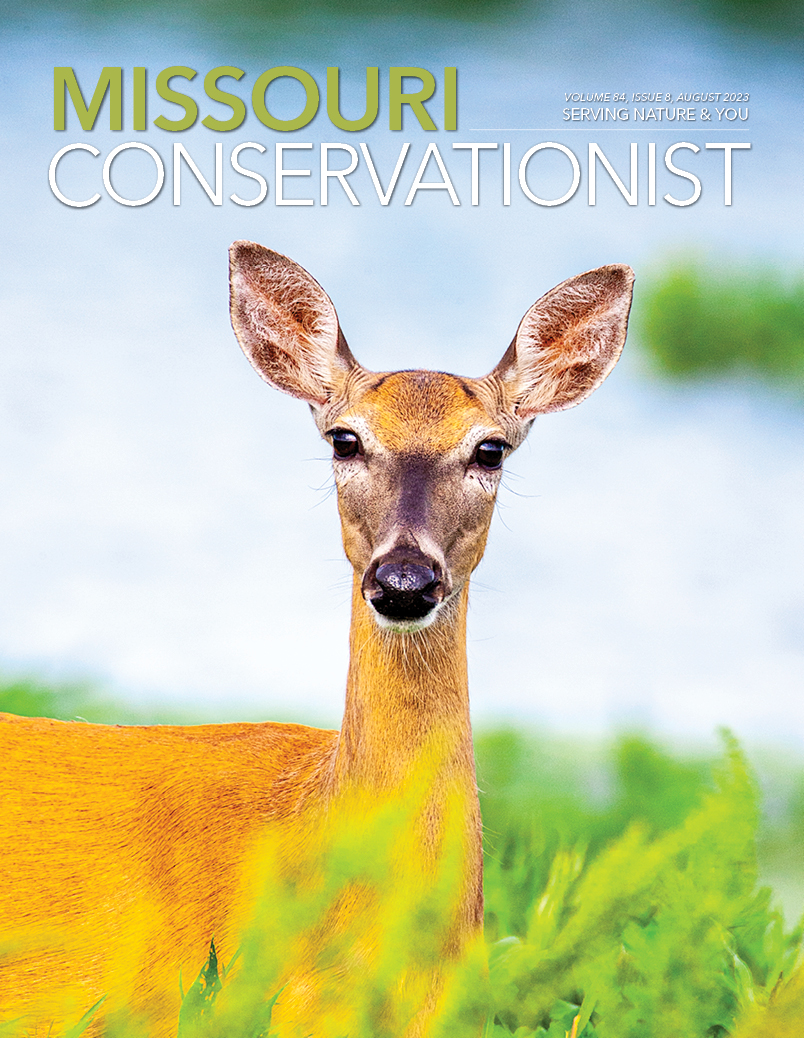Got a question for Ask MDC? Send it to AskMDC@mdc.mo.gov or call 573-522-4115, ext. 3848.
Q: Several large red oak trees on my property are dying. Would the drought cause this?
The drought could be a reason for your trees dying — but it also may have been the final blow that stressed the trees enough to die.
Most of the Missouri Ozarks was clearcut during the late 1800s to early 1900s. Today, many older trees in the red oak group are approximately 80- to 150-years-old. At these advanced ages, they are considered elderly. And, just like us, as trees age they become susceptible to multiple stressors such as drought, excessive rain, fungal attack, and insect infestation.
Conservationists recommend watering established trees two to three times per month during dry periods with 10 gallons of water per diameter-inch of a tree’s trunk, measured at 4.5 feet above the ground. To determine the total watering time needed using a hose set at medium pressure (2 gallons per minute), multiply the tree’s diameter in inches by 5 minutes.
Try to water as much of the root zone as possible and provide water gradually to promote infiltration. For trees less than 3 years old, consider watering them every seven to 10 days.
Be careful when watering evergreens in heavy clay soil as it is easy to damage their sensitive roots with too much water. Consider applying a 3-inch layer of shredded bark mulch around a tree’s root zone to help moderate soil temperatures and moisture levels.
For more information about tree care, visit short.mdc.mo.gov/4Wi.
Q: I found this strange plant while hiking in Don Robinson State Park. What is it?
This is Indian pipe, a perennial wildflower that lacks chlorophyll and is therefore white or sometimes pinkish. Instead of using the photosynthesis processes typical for green plants, this species relies on a vast network of roots and associated mycorrhizal fungi to obtain nutrients from the roots of surrounding living plants. Indian pipe functions as an “epiparasite,” or a parasite that uses other parasites. It is sometimes misidentified as a mushroom.
Indian pipe usually grows in small clusters. The flowers arise singly on a white, scaly stem and are urn-shaped, nodding, with four or five petals and no sepals. The flowers are white, turning purple and later black. As the seeds ripen, the downturned flower gradually turns upright. It can be seen blooming from August through October.
Learn more about this fascinating plant at short.mdc.mo.gov/4W3.
Q: I found a bright blue snake that was dead. What species was it?
It’s likely a northern rough greensnake. Upon death, these green-colored snakes lose the yellow pigmentation within their skin and turn a blue color within several hours. This is a normal decaying process for this species.
Northern rough greensnakes are active by day and live in bushes, vines, and low-hanging branches of trees near streams or lakes. They often are overlooked because they blend so well into their leafy surroundings. The beautiful green color helps these slender, mild-mannered insectivores blend in with the trees where they live. Greensnakes are active April through October. They can be spotted crossing roads, trails, and creeks.
They are sometimes confused with smooth greensnakes, a species considered extirpated (eradicated) from Missouri. One of the primary differences between the two is that the rough greensnake has raised keels on its back, giving it a rough texture; the smooth greensnake feels smooth. Also, smooth greensnakes are 14–20 inches in length. Rough greensnakes are 22–32 inches.
For more information about rough greensnakes, visit short.mdc.mo.gov/4WU. For more information about smooth greensnakes, visit short.mdc.mo.gov/4Ww.
And More...
This Issue's Staff
Editor - Angie Daly Morfeld
Associate Editor - Larry Archer
Photography Editor - Cliff White
Staff Writer - Kristie Hilgedick
Staff Writer - Joe Jerek
Staff Writer – Dianne Van Dien
Designer - Shawn Carey
Designer - Marci Porter
Photographer - Noppadol Paothong
Photographer - David Stonner






















